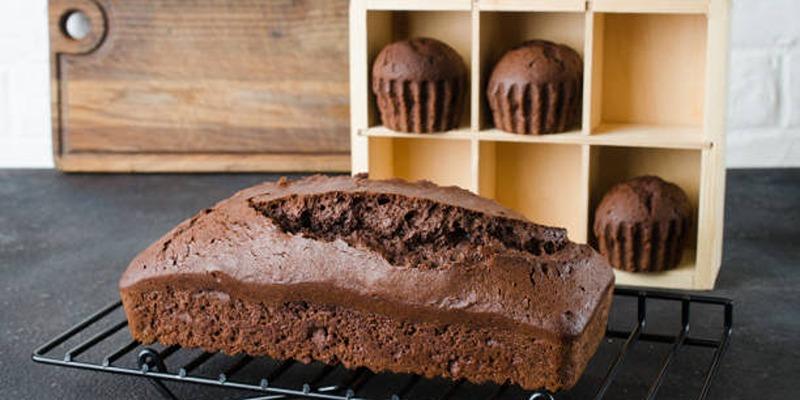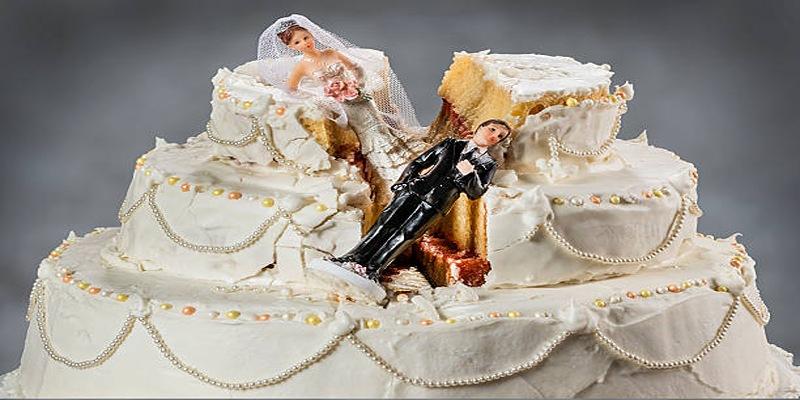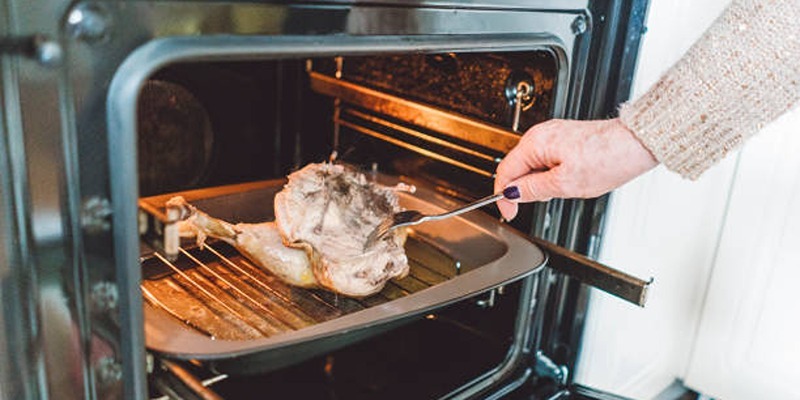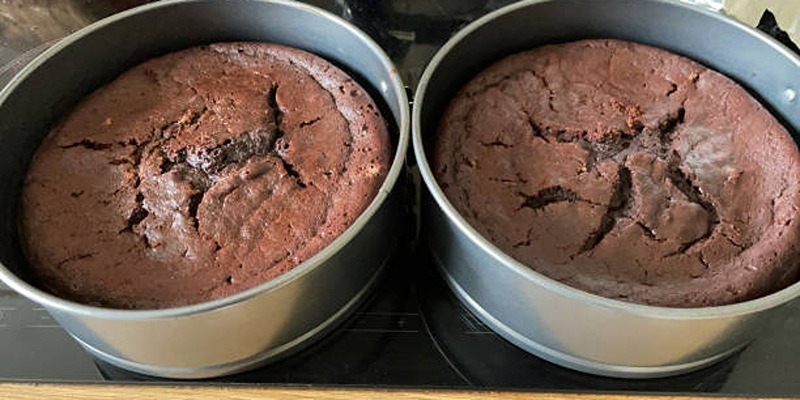Baking a cake can be a joyous experience, but it can also come with its fair share of challenges, one of the most common being a cracked cake. A cracked cake, while often still delicious, falls short of the visual perfection most bakers aim for. Understanding the causes behind this baking mishap is essential for achieving better results. Factors such as oven temperature, mixing technique, and the type of pan used can all influence the final outcome. By identifying and addressing these potential pitfalls, you can master the art of creating consistently smooth, perfectly risen cakes. This guide will delve into the reasons behind cake cracking and provide practical tips to help you prevent it, ensuring your next bake is both beautiful and tasty.
Common Causes of a Cracked Cake:
While a cracked cake can be frustrating, it is usually caused by a few common factors that are easily fixable.
- Oven Temperature: Incorrect oven temperature is a primary culprit. If your oven is too hot, the outer layer of the cake cooks too quickly, forming a crust. As the interior continues to bake, it expands and breaks through the crust, causing cracks.
- Overmixing the Batter: Overmixing introduces excessive air into the batter. This air expands during baking, causing the cake to rise rapidly and unevenly, which can lead to cracks.
- Incorrect Pan Size: Using a pan that's too small can cause the batter to overflow and crack. Conversely, a pan that's too large can result in the cake baking too quickly on the outside while remaining undercooked inside.
- Opening the Oven Door: Frequently opening the oven door can cause temperature fluctuations. These sudden changes can interrupt the baking process and cause the cake to crack.
- Improper Leavening: Using too much or too little leavening agent (baking powder or baking soda) affects how the cake rises. Excessive leavening can cause the cake to rise rapidly and then collapse, leading to cracks. Insufficient leavening can result in a dense cake that cracks as it tries to rise.
How to Prevent Your Cake from Cracking?

- Preheat Your Oven Properly: Ensure your oven reaches the correct temperature before baking. An oven thermometer can help verify the actual temperature, as oven dials may be inaccurate.
- Follow Mixing Instructions: Mix the batter just until the ingredients are combined. Overmixing can introduce excess air, leading to uneven rising and cracks.
- Use the Correct Pan Size: Adhere to the recipes recommended pan size. If using a different size, adjust the baking time accordingly. A smaller pan may require more baking time to prevent cracking.
- Avoid Opening the Oven Door Frequently: Resist the urge to frequently open the oven door. Check the cake through the oven window using the oven light.
- Measure Ingredients Accurately: Carefully measure leavening agents to ensure proper cake rise without collapsing.
- Use Room Temperature Ingredients: Ensure ingredients like eggs, butter, and milk are at room temperature. This helps achieve a consistent batter that bakes evenly.
- Bake in the Center of the Oven: Position the cake pan in the center of the oven for even heat distribution, preventing uneven baking.
- Consider Baking Strips: Dampened baking strips wrapped around the cake pan help the cake bake more evenly by insulating the sides and slowing edge baking.
Troubleshooting Tips:
- If Your Cake Cracks Despite Precautions: Sometimes, despite your best efforts, the cake may still crack. In such cases, level the top with a serrated knife and cover imperfections with frosting. Alternatively, consider it a learning experience and identify areas for improvement next time.
- Experiment with Different Recipes: Not all cake recipes behave the same way. Some are more prone to cracking than others. Experiment with different recipes to find ones that consistently yield desired results.
Expert Methods for Avoiding Cake Cracks:
Beyond the basics, several advanced techniques can help ensure your cakes bake evenly without cracks.
Implementing the Water Bath Method:
Commonly used for cheesecakes, a water bath (bain-marie) can be beneficial for other cakes too. By placing the cake pan in a larger pan filled with hot water, this method ensures even, gentle heating and prevents the edges from baking too quickly.
Utilizing Baking Thermometers and Timing:
Using both an oven thermometer and a cake thermometer can significantly improve your baking results.
- Oven Thermometer: Place an oven thermometer inside your oven to ensure it is at the correct temperature, as oven readings can often be inaccurate.
- Cake Thermometer: A cake is typically done when its internal temperature reaches about 200F (93C). This tool helps you avoid overbaking or underbaking, which can lead to cracks.
Adding Moisture to Your Baking Environment:
Adding moisture to the oven helps maintain a consistent temperature and humidity level, preventing cracks. This is particularly useful in dry climates or during winter.
Ways to Add Moisture?
- Place a shallow pan of water on the bottom rack of the oven while baking.
- Mist the inside of the oven with water from a spray bottle before preheating.
Adapting Recipes for Altitude and Humidity:

Baking in high-altitude areas or environments with varying humidity levels may require recipe adjustments to prevent cracks.
High Altitude Adjustments:
- Reduce baking powder by 1/8 to 1/4 teaspoon per teaspoon.
- Reduce sugar by 1 to 2 tablespoons per cup.
- Increase liquid by 1 to 2 tablespoons per cup.
High Humidity Adjustments:
- Decrease liquid slightly if the batter seems too thin.
- Add a bit more flour if the batter is too runny.
Decorative Techniques to Conceal Cracks:
If a crack appears despite your best efforts, several decorative techniques can effectively conceal it:
- Frosting and Icing: Apply a generous amount of frosting or icing. Start with a crumb coat, let it set, then apply a thicker layer.
- Ganache Drip: Pour slightly cooled ganache over the top of the cake, letting it drip down the sides for a sophisticated look.
- Fresh Fruit and Edible Flowers: Strategically place fresh fruit or edible flowers on top. This hides cracks and adds a beautiful, natural element.
- Powdered Sugar Dusting: A simple dusting of powdered sugar can work wonders to hide minor cracks and give your cake a classic appearance.
- Cake Decorations: Use sprinkles, chocolate shavings, or other decorative elements to distract from any imperfections.
Conclusion:
A cracked cake can be frustrating, but it doesn't have to ruin your baking experience. By understanding the common causes of cake cracking and following preventative measures, you can achieve beautiful, crack-free cakes every time. Remember to pay attention to oven temperature, mixing techniques, pan size, and leavening agents. And if all else fails, use troubleshooting tips to help salvage your cake or try a different recipe altogether. With patience and practice, you'll soon become an expert at preventing cracked cakes and impressing your friends and family with your baking skills.







